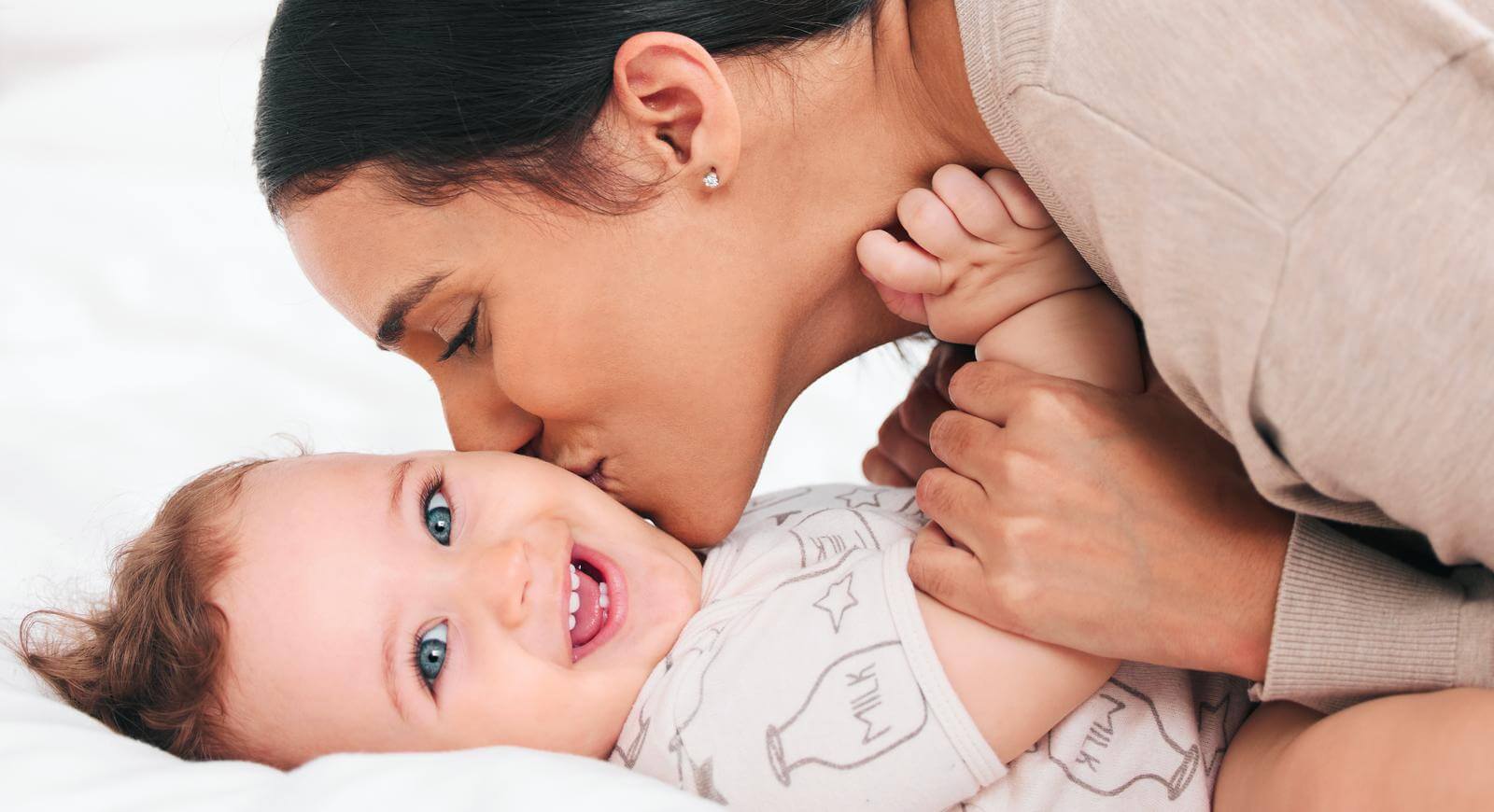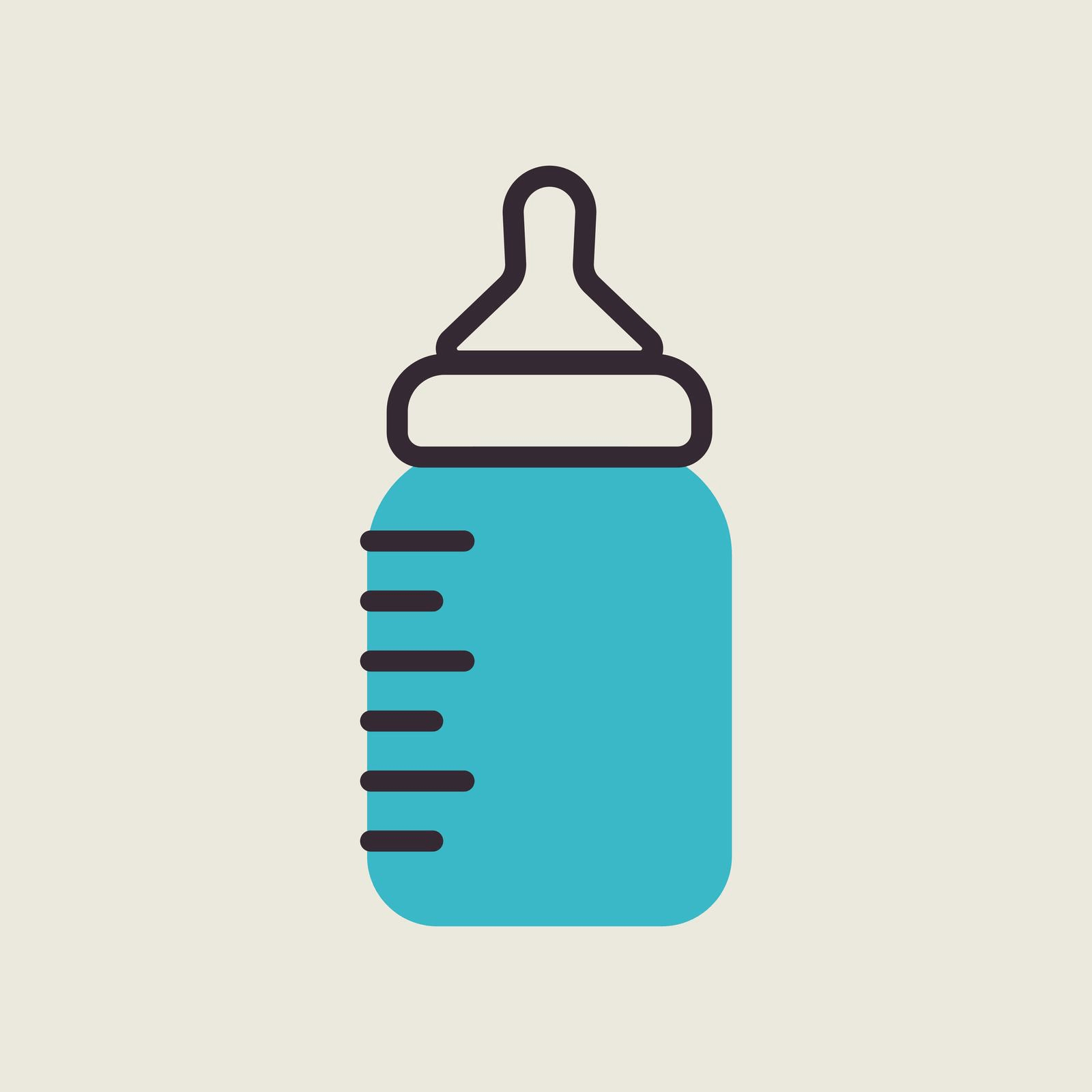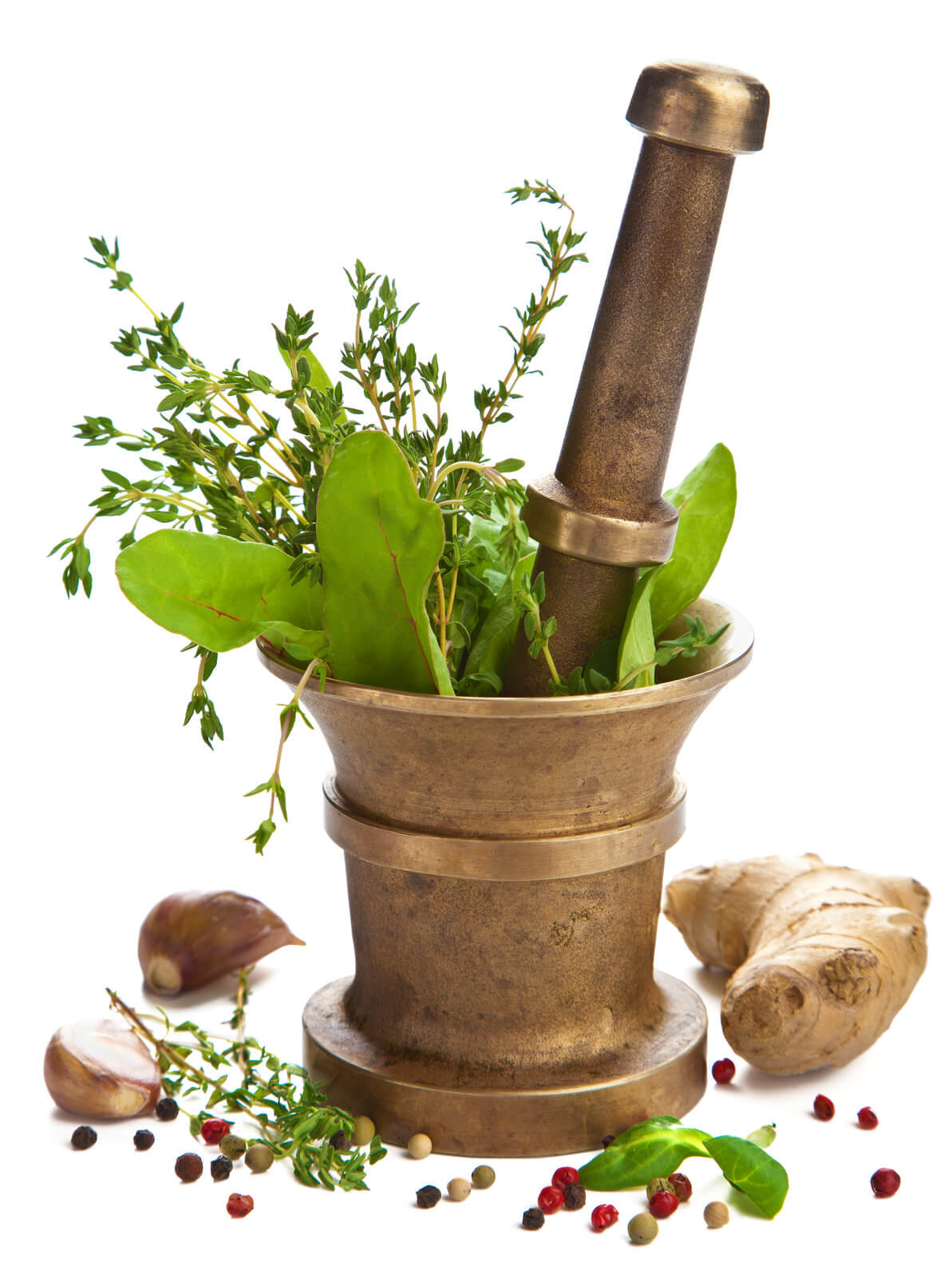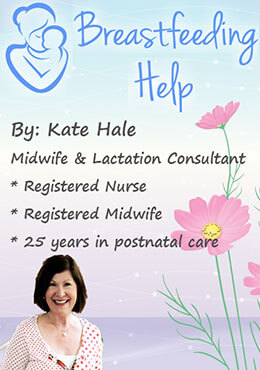See all "Breasts" Section Topics

Moms who are breastfeeding, are more prone to breast infections, due to fungal or bacterial pathogens. Sometimes, if you are just feeling pain in your nipples, breastfeeding thrush is not the cause at all. Rather, a wrong breastfeeding technique, or anomaly with your baby’s mouth, is causing your nipples to be stressed unnecessarily. The result will be nipple pain. Nipple trauma can make you more vulnerable to developing thrush on the nipples. Additionally, if you have a history of vaginal yeast infections, or have taken antibiotics in the past, you are also more likely to develop thrush on the breast. If you are wondering if you indeed have thrush on the breast or nipple, we will discuss some of the symptoms that can clue you into a correct diagnosis of your breast problem. Also, we will go over some of the other leading causes of painful nursing. If you’d like to specifically learn more about nipple thrush, you can check out this comprehensive article: Yeast Infection on the Nipple.
Symptoms of Breastfeeding Thrush

Correctly diagnosing a yeast infection on the breast can be difficult. A study published in the Journal of Human Lactation [20.3 (2004): 288-295], found some interesting correlations between symptoms and the presence of thrush on the breast. The study defined shiny or flaky skin, of the nipple or areola, as signs of breast thrush. And, burning pain of the nipple or areola, sore but not burning nipples, stabbing breast pain, and non stabbing breast pain were also symptoms of this condition.
The study cultured the nipple and areola skin of 100 healthy breastfeeding mothers to detect Candida in these areas. The study found, the predictive ability of the physical indicators of thrush, was highest when three or more signs or symptoms occurred together. And, when flaky or shiny skin occurred on the nipple or areola, and was accompanied by breast pain, this also strongly indicated breast thrush. Similarly, you can also see if you have three or more signs or symptoms of Candida on the breast, it indicates you have this condition.
The classic symptoms of breastfeeding thrush are outlined in a study published in the British Journal of Midwifery [23.2 (2015): 98-100]. The study cautions that there are several other causes for nipple pain; so, this symptom alone can be misleading. The study states, that thrush induced nipple pain, can be diagnosed when the nipple or areola are sensitive to touch; which, evokes a high level of pain. The pain will be persistent, and usually severe. Nipple shield use, increased milk removal, or applying heat to the area will have no effect on pain due to Candida. Nipples, and areolas of breasts infected with thrush, can appear pink. Other symptoms of thrush on the breast include suddenly experiencing deep radiating breast or nipple pain, and itching of the breast tissue.
A study published in Mycoses [51.s4 (2008): 2-15], also defines a few characteristics that can indicate thrush on the skin of the breast. The following symptoms were outlined as indicators of Candida colonizing the skin:
- The skin becomes red and inflamed looking.
- The skin becomes very itchy.
- The skin becomes thinner and develops small pus filled bumps.
- The pus filled bumps on the skin break open and leave a discolored base behind.
A 1/2 Day & Yeast is Gone!
Linda Allen suffered from yeast infections for years. Through researching natural medicine & Candida, she found an efficacious solution!
Linda is one expert you want on your side! Let her show you how to get rid of a superficial yeast infection in just 12 hours; AND, keep it gone!
A 60-day, 100% money back guarantee is provided.
Visit Official Site!Prevalence of Breastfeeding Thrush

A study of 117 women, who were currently breastfeeding, was published in the Journal of Obstetric, Gynecologic, & Neonatal Nursing [40.6 (2011): 753-764]. The study examined these women during the first year after the child was born. A little over half of the women maintained regular breast feeding—56% to be exact. Of the 56% who regularly breastfed, 23% of them developed some form of breast infection. The study found that, of the women who had a breast infection, the following reasons were the cause:
- General breast infection (67.5%)
- Candida infection (32.4%)
- Excess milk in the breasts (18.0%)
- Nipple tenderness (8.1%)
- Blocked or obstructed milk ducts (4.5%)
According to this same study, the warm, moist nipples of the breastfeeding mother are good environments for Candida to develop in. The study also relates what many other researchers have stated: antibiotic use predisposes women to breast yeast infections. The study also cautions mothers, that the yeast living on their nipples or in the child’s mouth, can spread via contact. Other members of the family, that come into contact with these areas or other breastfeeding materials, can pick up Candida. It is therefore sensible to thoroughly clean off anything that goes into the baby's mouth or comes in contact with the mother’s nipples; if these areas have thrush.
Another study also investigated the prevalence of thrush in breastfeeding women. The study was published in the Journal of Obstetric, Gynecologic, & Neonatal Nursing [34.1 (2005): 37-45], and included 100 lactating women and their babies, and 40 non-lactating, non-pregnant women who served as controls. At two weeks after birth, samples of the women’s skin were taken; and, oral samples from the infants were collected as well. The group of 100 women who were lactating, had 23% test positive for Candida; and, 20% had an active thrush infection of the breast. Concerning the babies, 20% of them were positive for oral thrush.
Eliminate Bacterial Vaginosis & Vaginal Odor
Jennifer O’Brien is one prominent expert on BV that knows how to get rid of vaginal odor. BV is a common infection that you don’t have to put up with.
Jennifer will show you how to naturally eliminate vaginal odor in just 3 days.
A 60-day, 100% money back guarantee is provided.
Visit Official Site!Naturally Cure Breastfeeding Thrush

One safe, natural method you can implement, to eliminate breastfeeding thrush, is to use a few natural antifungal food items directly on the infected area of the breast. Just go purchase some coconut oil, garlic bulbs, and cinnamon powder. All three of these foods are proven to stop Candida growth; and, small amounts of each can be powerful treatments. To start, simply take the garlic and remove the outer papery hull until you have just the cloves. Throw the cloves into your blender and mix them up thoroughly; let it sit for about 5 minutes before you take it out of the blender. Mixing garlic like this is important; as garlic contains alliin and alliinase. When you crush garlic, these two chemicals combine and form allicin—which is a powerful medicinal chemical.
Next, pour coconut oil into a small bowl and dump in a generous amount of cinnamon powder in. Take the mixed garlic from the blender and put it in the bowl as well. Mix these three ingredients thoroughly. You may not need to make too much each time. Once this mixture is made, simply apply it directly to the affected part of the breast. You may want to take a piece of absorbent material and soak it in this mixture; then, tape it onto your breast (so the natural mixture you made stays in contact with the Candida colonized area of the skin). You may have to keep this treatment up for a few days before you start seeing results. You can also substitute honey in place of the coconut oil; if you want something that sticks a little bit better. Honey may work best for treating breast thrush at night while you sleep! All of these natural items do go to work and stop Candida development; and, Candida Hub has information about all these natural items. If you have some time you may want to read up on them:
- Garlic for Yeast Infection
- Honey for Yeast Infection
- Cinnamon Powder for Yeast Infection
- Coconut Oil for Yeast Infection
Just remember to wash off the breast and nipple before you start nursing your baby again. The strong concentration of garlic in this remedy isn’t going to taste good to your baby, and could cause them discomfort. Before you use any natural remedy on your baby, make sure you consult a certified pediatric physician. This remedy is just for the moms; not the babies!
Clair Goodall: Author & Nature Lover
Clair Goodall is a bee-obsessed natural medicine convert from Minnesota. She is one expert you might want to know more about!
Clair will help you protect you and your family from toxic products and chemicals and help you discover solutions from nature.
Also, Clair’s book is backed by a 60-day, 100% money back guarantee
Visit Official Site!Other Causes of Nipple Pain During Breastfeeding
If you are having nipple pain, do not jump to the conclusion that the pain is a result of Candida. In many cases, simply improving your breastfeeding technique will be enough to end nipple pain. An informative study, published in the International Journal of Dermatology [51.10 (2012): 1149-1161], discussed some common causes women experience nipple pain. And, nipple yeast infections are not one of the major causes! Here are the problems that lead to nipple pain in breastfeeding moms as described by this journal:
- Improper breastfeeding technique: Poor latching of the infant (improper positioning of the baby’s mouth on the mother’s nipple) is considered to be the most common cause of breastfeeding related nipple pain. If the baby is not positioned correctly, and suckles intensely, the mechanical stress exerted on the nipple can lead to skin trauma and abrasions. Correct suckling, will include the baby pushing their tongue over their lower gum, and curving the tongue around the nipple. If this is not happening, the resulting nipple damage can cause pain (Geddes, et al.; 2008).
- Physical oral anomalies in the baby: Birth defects in baby’s mouths, like a short frenulum (the skin ridge below the tongue that attaches the tongue to the base of the mouth; and, can limit movement of the tongue if it is too short—medically, this condition is known as ankyloglossia), or cleft palate / lip can cause significant mechanical stress to be placed on the nipple. This stress can cause irritation of the nipple; and, possibly lead to a bacterial or fungal infection of the nipple. Babies who have a short frenulum, frequently have difficulties with breastfeeding. These difficulties include: poor attachment to the nipple, inability to remove enough milk from the breast, and lower weight gain. Geddes, et al., in their 2008 Pediatrics study, found that surgical correction of short frenulums, greatly helped improve breastfeeding and reduced associated pain.
- Nipple psoriasis and eczema: If you are a mom with a history of psoriasis, you may get some flare-ups while you are lactating. Also, the areas of injury on the breast or nipple, can lead to new psoriasis plaques to form. Nipple psoriasis commonly appears as red plaques that are well defined, also having fine scales separated by white jagged lines. Nursing mom’s eczema, typically forms on the areola, and sometimes moves out to the breast. Sometimes, this eczema will result in sudden reddened skin, oozing fluids, and crusting material forming. It can also be more long term; causing dry, scaly lesions on reddened skin. These lesions can be very itchy and may cause pain and burning sensations.
- Blocked or obstructed milk ducts: Also known as “milk blisters,” this condition can occur with the symptoms of tenderness in an area of the breast due to a lack of milk being removed from the breast. An area of the breast skin may become reddened, and increase in firmness, due to this condition. A sensitive, small blister that is white in color can also form on the nipple from this problem. Milk ducts deeper within the breast, can also become blocked; resulting in the formation of a milk cyst. Blocked milk ducts can increase the occurrence of a breast infection—also known as mastitis (Kinlay, et al.; 2001).
Too Much Breast Milk Leads to Infection

If you have been having pain during nursing, and have not been removing the milk from your breasts regularly, it may predispose you to getting mastitis. A study published in American Journal of Obstetrics and Gynecology [149.5 (1984): 492-495] emphasized the importance of emptying the breasts of milk. According to the study, stagnant milk in the breasts, can sometimes cause inflammation of the breasts. Inflammation of the breast can lead to a full blown infection if not remedied. The study found, that half the women who had inflammation of the breast without infection, later developed mastitis. Both women with only inflammation and women who had mastitis were greatly benefited by thoroughly emptying their breasts of milk.
Another study also found that an oversupply of milk correlated with the development of mastitis. The study was published in BMC Family Practice [16.1 (2015): 1] and involved 346 women—of these 20% developed mastitis. The study found, that during the first 4 weeks after childbirth, women who had nipple damage had over a two-fold increase in their chances to develop mastitis. Moms who had an oversupply of breastmilk, experienced problems with their infants attaching to the nipple, used nipple shields, or expressed their milk multiple times a day, had a greater risk for developing breast infection. Conversely, moms who started removing breast milk right away—before the first survey was administered—did not show any increased risk for getting mastitis. A chart, showing correlations between these situations and mastitis, is provided in the study. Hence, the importance of early, regular, and not over frequent removal of breast milk is evident by such findings.
Get Kate Hale’s Support
Recommended by Dr. Anne MacGibbon, Obstetrician and mother of three, Kate Hale delivers valuable nuggets of wisdom on breastfeeding essentials.
Kate shows you a complete and effective technique that will teach you to deeply latch your baby and breastfeed without pain within minutes for a contented baby and an end to sore nipples.
A 60-day, 100% money back guarantee is provided.
Visit Official Site!Professional Breastfeeding Help
If you have been struggling with breastfeeding and are getting sore nipples, not getting enough milk out during feeding, or any other similar problems, you may benefit greatly from taking a few lessons on how to breastfeed. Getting your baby to latch on correctly and take in enough milk, can be challenging. There are professionals who know the ropes of this important bonding experience. One breastfeeding expert, Kate Hale, has spent the last 25 years helping women in postnatal care, in her private practice and in maternity hospitals throughout Australia. Kate is also a registered nurse, registered midwife, and International Board Certified Lactation Consultant. Kate has several key video lessons that can quickly improve your breastfeeding technique and reduce your chances for developing breast or nipple thrush. Even the dad’s are included in Kate’s videos; so, the whole family can get some great tips to use during this important time. If you would like to learn more about Kate, or see her videos, you can find out more at Kate Hale’s website.
A Natural, 12 Hour Yeast Infection Cure

According to a research paper published in Clinical Microbiology Reviews [12.1 (1999): 80-96], Candida species are quite ubiquitous organisms. Candida are most frequently present in the mouth; and, live in 31% to 55% of healthy people. The species that causes approximately 70% to 80% of all Candida infections is C. albicans.
The Chinese Journal of Obstetrics and Gynecology [2011 Jul;46(7):496] reports there appears to be a correlation between intestinal Candida infections and vaginal yeast infections. And, this provides a clue, as to why yeast infections in general, can reoccur.
This study states, in 148 cases of vaginal candida infections, 33.1% of the women were infected in both the intestines and vaginal area. The recurrence rate of yeast infections, in women with simultaneous intestinal infection, was significantly higher than for women who did not have an intestinal infection. This study concluded that vaginal yeast infections are highly associated with simultaneous intestinal Candida infection.
As research appears to indicate, systemic Candida infections can and do happen. A more systemic Candida infection may primarily get a foothold in the intestines; and cause a wide array of problems. If your yeast infections keep happening, a systemic Candida problem may be why.
One woman who suffered from a systemic Candida infection, for about 12 years, was Linda Allen. The systemic Candida infection that attacked Linda caused a wide range of health problems in addition to yeast infections. Some of these problems, Linda describes in her own words in the following quote:
To be honest, it was hard to pinpoint exactly what was wrong: I wasn’t really sick, but I wasn’t really well either. I had listlessness, fatigue, brain fog, stomach ailments, unexplained rashes, skin infections, and so on. It seemed like every day brought a new challenge.
My energy was sapped and I felt exhausted, which affected my grades and put a big dent in my social life.
Linda Allen’s symptoms included an embarrassing vaginal discharge, severe itching, and burning sensations. Her infections were difficult to deal with, and Linda’s health problems cost her financially as well. Linda states these infections of Candida can become excruciating when they happen as frequently as a menstrual period.
Yet, Linda spent a great deal of time in research; and even questioned health professionals who were kind enough to share some time with her. Linda even tried an array of purported "cures." Although it took a while, eventually, Linda put together a natural treatment plan she hoped would solve her Candida situation.
After spending about a year refining her new approach, Linda tried her system on herself. It worked amazingly well. Linda even returned to a few medical doctors to get tested for the presence of infections. These tests revealed all indicators of infection had vanished! Linda was indeed well again, after such a long, difficult journey.
Linda has since published a book detailing how to copy her success. She also includes a 12 hour yeast infection cure that can get rid of a superficial (such as a genital yeast infection or oral thrush) yeast infection in about 12 hours.
Linda’s publisher protects those who get her book with a 60 day, 100% money back guarantee. Linda’s publisher, a subsidiary of the United States based firm Keynetics Incorporated, is a reputable digital retailer that has been around for a long time. They have great customer service, and make getting a full refund on Linda’s book quick and easy. If you’re not satisfied, you can quickly get all your money back.
If you would like to learn more about Linda’s journey to freedom from Candida, see reviews of others who tried her natural system, or find out more about her efficacious book; you can find more information at Linda Allen’s website.
Author: Mr. Nicholas Gross

Nick Gross is a natural medicine enthusiast who has been researching and writing about natural medicine since 2008. Nick is primarily a web developer but also researches and authors written and video content about natural health. Nick has a bachelor’s degree in Management Information Systems from the University of Northern Iowa.
Disclaimer
The information on this website is not a prescription for anyone. This information is for informational or educational purposes only, and is not a substitute for professional medical advice or consultations with healthcare professionals.
Affiliate Disclosure
Some of the links provided on this website are affiliate links. When a purchase is made through these links, Candida Hub earns money from commission. This helps to keep the website up and helpful to people for free. Thank you for any support!
Stay Up to Date
If you enjoyed this article, consider following / liking our Facebook page. This page is primarily utilized to alert followers of new articles that are put on Candida Hub. Candida related news is also discussed. While you are there, you can see what has been more recently added to Candida Hub.
SOURCES:
- http://dx.doi.org/10.1177/0890334404267226 — Francis-Morrill, Jimi, et al. "Diagnostic value of signs and symptoms of mammary candidosis among lactating women." Journal of Human Lactation 20.3 (2004): 288-295. PubMed
- http://dx.doi.org/10.12968/bjom.2015.23.2.98 — Duncan, Deborah. "Candida and breastfeeding." British Journal of Midwifery 23.2 (2015): 98-100.
- http://dx.doi.org/10.1111/j.1439-0507.2008.01606.x — Havlickova, Blanka, Viktor A. Czaika, and Markus Friedrich. "Epidemiological trends in skin mycoses worldwide." Mycoses 51.s4 (2008): 2-15. PubMed
- http://dx.doi.org/10.1111/j.1552-6909.2011.01303.x — Strong, Genae D. "Provider management and support for breastfeeding pain." Journal of Obstetric, Gynecologic, & Neonatal Nursing 40.6 (2011): 753-764. Full Text Available Here, PubMed
- https://dx.doi.org/10.1177/0884217504272814 — Morrill, Jimi Francis, et al. "Risk factors for mammary candidosis among lactating women." Journal of Obstetric, Gynecologic, & Neonatal Nursing 34.1 (2005): 37-45. PDF Available Here, PubMed
- http://dx.doi.org/10.1111/j.1365-4632.2011.05445.x — Heller, Misha M., Honor Fullerton Stone, and Jenny E. Murase. "Caring for new mothers: diagnosis, management and treatment of nipple dermatitis in breastfeeding mothers." International journal of dermatology 51.10 (2012): 1149-1161. PubMed
- http://dx.doi.org/10.1542/peds.2007-2553 — Geddes, Donna T., et al. "Frenulotomy for breastfeeding infants with ankyloglossia: effect on milk removal and sucking mechanism as imaged by ultrasound." Pediatrics 122.1 (2008): e188-e194. PubMed
- http://dx.doi.org/10.1111/j.1753-6405.2001.tb01831.x — Kinlay, Joanne R., Dianne L. O'Connell, and Scott Kinlay. "Risk factors for mastitis in breastfeeding women: results of a prospective cohort study." Australian and New Zealand journal of public health 25.2 (2001): 115-120. PubMed
- http://www.ncbi.nlm.nih.gov/pubmed/6742017 — Thomsen, A. C., T. Espersen, and S. Maigaard. "Course and treatment of milk stasis, noninfectious inflammation of the breast, and infectious mastitis in nursing women." American journal of obstetrics and gynecology 149.5 (1984): 492-495
- http://dx.doi.org/10.1186%2Fs12875-015-0396-5 — Cullinane, Meabh, et al. "Determinants of mastitis in women in the CASTLE study: a cohort study." BMC family practice 16.1 (2015): 1. PubMed Full Text
- https://doi.org/10.1128/CMR.12.1.80 -- Fidel, Paul L., Jose A. Vazquez, and Jack D. Sobel. "Candida glabrata: review of epidemiology, pathogenesis, and clinical disease with comparison to C. albicans." Clinical Microbiology Reviews [12.1 (1999): 80-96].
- https://pubmed.ncbi.nlm.nih.gov/22041440/ -- Lin XL, Li Z, Zuo XL. "Study on the relationship between vaginal and intestinal candida in patients with vulvovaginal candidiasis." Chinese Journal of Obstetrics and Gynecology (Zhonghua fu chan ke za zhi). [2011 Jul;46(7):496].









